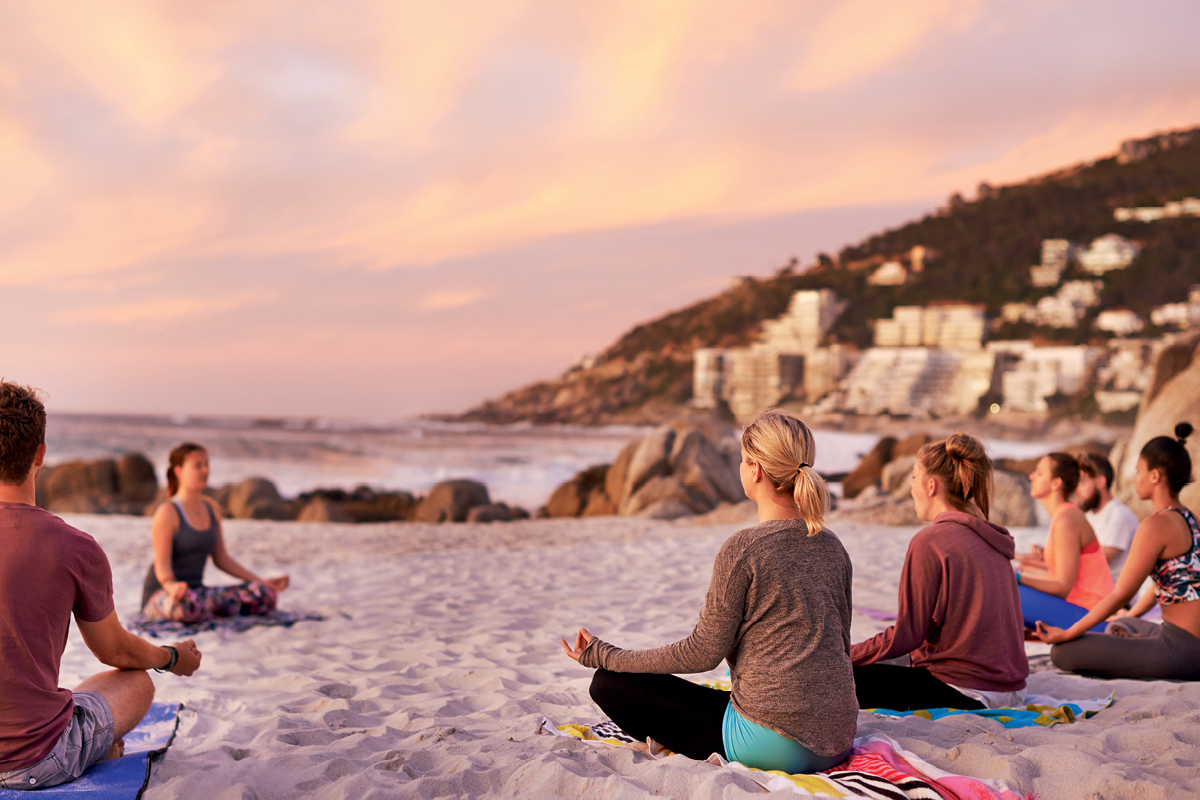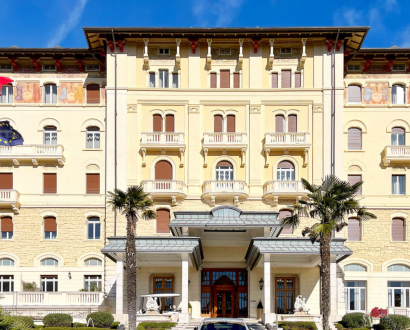Call it people power. Or maybe just clever marketing. But the wellness industry – focusing on protecting health rather than treating disease – is on an exponential, vitamin and fitness-fuelled joyride. It’s also fresh enough to offer lucrative opportunities to those who can tap into a new style of health and corporate consciousness.
Even established brands are cashing in on consumer enthusiasm for a complete wellness lifestyle. Weight Watchers (WW), for instance, is rebranding itself as more than just a slimming company, with subscription bonuses such as an Apple Watch or a Fitbit. In 2017, WW’s sales growth jump-roped 12.2% and revenue hit US$3.1 billion. For a time, even Oprah climbed on board as an investor.
An unstoppable market force
Worldwide, the wellness market grew by an impressive 10.6%, to US$3.72 trillion, from 2013–15, making it one of the world’s fastest-growing and most resilient markets, say researchers Katherine Johnston and Ophelia Yeung, of Global Wellness Institute (GWI), a not-for-profit research leader.
In comparison, pharmaceutical revenues worldwide clocked around US$1 trillion in 2014, although that figure does not include all businesses involved in medical care.
Global wellness spans, but is not limited to, wellness tourism – sprinting its way from US$494.1 billion in 2013 to US$563.2 billion in 2015: healthy eating, nutrition and weight loss worth US$648 billion; mind and body fitness, US$542 billion; workplace wellness, US$43 billion; complementary and alternative medicine, US$199 million; and the spa industry, US$99 billion, according to the GWI’s Global Wellness Economy Monitor, 2017. “The growth trajectory of the wellness industry appears unstoppable,” say Johnston and Yeung.
A move away from the ‘fix it’ mentality
It’s a view shared by entrepreneurs such as Radek Sali, a member of the Australian Financial Review Rich List, with a net worth of A$372 million. He took Swisse Wellness, an Australian vitamin, supplement, and personal care product company, from a profit of A$2 million in 2013 to an astounding A$146 million profit in just three months in 2015, by focusing on Chinese customers. In 2016, he sold the company for A$1.67 billion to China’s Biosteme.
The son of the father of Integrative Medicine, Professor Avni Sali AM, Sali shares a desire to impact positively on the world. His investments include Hydralyte, a global leader in clinical hydration; cutting-edge start-ups such as 1 Giant Mind, a free meditation app; and the Wanderlust Festivals, which celebrate mindfulness.
Sali does not believe the pharmaceutical industry and wellness industry are at odds, but rather that “a blend of two is the future”. An example: his investment in myDNA, a genetics company offering analysis of lifestyle choices on health. Available in Australia, the UK and Canada, it will soon launch in the US.
He says 50,000 people, mainly females aged between the ages of 25 and 54, have paid A$50–A$120 to access the service in the past two years. “The trend towards products or services like these is a move away from the ‘fix it’ mentality,” he adds. “It makes so much sense for people to be empowered in managing their health rather than just going to the doctor when something is broken.”
Easy to swallow
Supplementation continues to be lucrative and presents an opportunity for the savvy. Revenue from omega-3 supplements alone is worth US$33 billion and, by 2025, is estimated to be worth US$57 billion. Wellness entrepreneur Teresa Cutter, whose website, The Healthy Chef, has 12 million views a year, launched her own supplements range in 2012, with a pea protein supplement, and now has more than 35 functional food products.
“Our brand’s success has relied heavily on the ability to be innovative and ahead of the game,” says Cutter.
She is currently collaborating with life insurance company TAL on a wellness program tied with a lifetime discount of 7.5% for clients with a healthy BMI. While holistic and traditional health partnerships are a growing trend, so is Chinese investment in wellness or biotech companies.
Go Healthy, a supplements business founded in 2008 in New Zealand by friends Lisa South, Kurt Renner and Greg Driscoll, which went on to become the number one brand, began expansion into Asia in 2017 when Chinese private equity firm CDH Investments bought 80% of the company.
CDH has invested US$5.1 billion in 72 companies worldwide, of which 75% are in consumer products, retail, services and health care, according to the Australian Financial Review. Chinese companies want “clean and green” brands delivering exceptional growth, the newspaper says.
According to auditing firm KPMG, Australia’s cutting-edge technology and high regulatory standards are also attractive to the Chinese consumer. Conversely, Sali believes the China market is appealing to entrepreneurs because of its size and the fact the population is already attuned to wellness therapies, such as acupuncture, that science is only now catching up with.
In 2017, he launched an advertising agency, Stratosphere, to help other companies target the Asian market. Like Westerners, Sali says, Asians are also looking for an authentic product or experience. “To succeed, you need to believe in the products you sell.”
Marrying wealth with wellbeing
Neil Jacobs, CEO of the award-winning Six Senses Hotels, Resorts and Spas, across Europe, Asia, the Americas, and the Middle East and Africa, says the Chinese market continues to explode, with outbound tourism increasing at 15%–20% a year.
Six Senses’ wellness program, which includes yoga, sleep, food and an analysis of biomarkers, is a favourite with the Chinese as well as corporate leaders. Says Samantha Lippiatt, co-founder of Australia’s first dedicated wellness travel company, Health and Fitness Travel: “The definition of luxury is no longer solely attached to self-indulgence, but to experiences that add value to health.”
Smart money is also on workplace wellness. Entrepreneur Richard Branson has Virgin Pulse, a mobile app, fitness tracker and desktop website that enables clients to increase employee productivity and decrease healthcare costs. “If you take care of your employees, they’ll take care of your business,” says Branson. More than 250 industry leaders representing over two million employees have already bought into the program.
Global leader in corporate wellbeing Renee Moorefield, CEO of Wisdom Works, has helped thousands of executives – from Fortune 500 teams to social entrepreneurs – lead organisations where people and business thrive.
“Thriving is so much more than eating a specific way or exercising,” she says. “It is a capacity for fostering more effective and sustainable organisations.”
In her book Driven by Wellth, Moorefield talks about how leaders can marry wealth with wellbeing for positive economic, ecological and social returns.
‘Conscious businesses’ evolve not just corporate profits but human beings, Moorefield says. “They realise that wealth and wellbeing are partners, not adversaries. When mind, body and spirit come online together, people can create the extraordinary.”
“When mind, body and spirit come online together, people can create the extraordinary.”
Jacobs believes the next big wave of investments is in wellness communities – mixed use, multi-generational, primary residence communities that embrace the latest in research and technology, meaning sustainable and healthful environments for all ages.
Wellness lifestyle real estate that includes wellness elements into design, construction, amenities and services was estimated at a total worth of US$118.6 billion, heavily concentrated in North America, Asia, and Europe, in 2015, say Johnston and Yeung.
“We believe that this market is just the tip of the iceberg,” they add.







